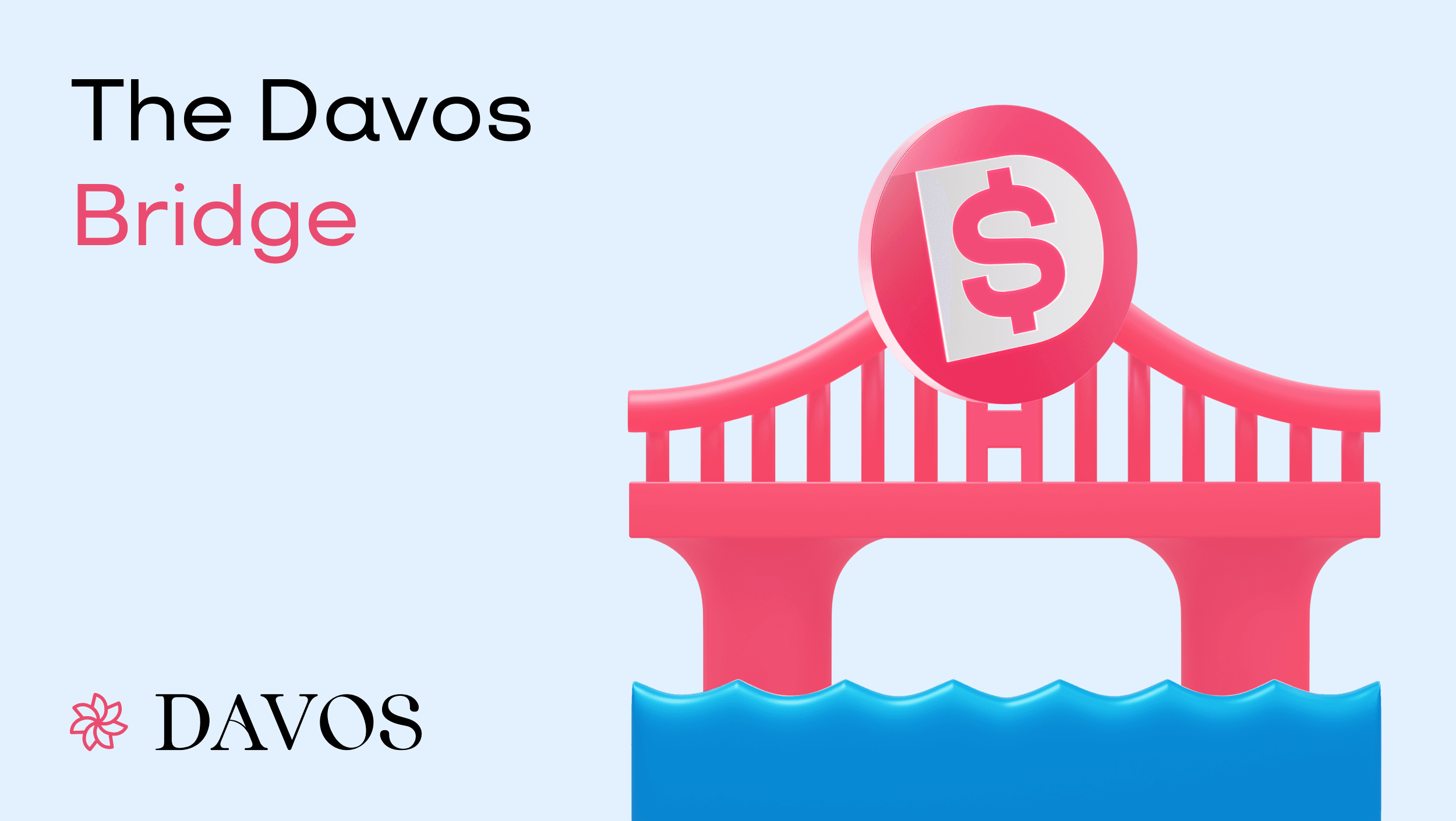The Davos Bridge: Connecting the Top 6 EVM Chains

Davos Protocol features a unique Bridge that enables users to move their DUSD across the Top 6 main EVM chains without incurring platform fees. Our easy-to-use solution provides users with the freedom to explore different opportunities, unbounded by the chain they have their reward-bearing tokens on.
TL;DR:
- Davos Protocol offers a Bridge to its users.
- Users can bridge DUSD between the top 6 EVM chains without incurring any platform fees.
- Davos Protocol’s bridge advanced chain adaptability ensures readiness for future blockchain integrations, maintaining our position at the forefront of technology.
Davos Bridge: Seamless Cross-Chain Liquidity
The Davos Protocol is proud to introduce the Davos cross-chain bridge. Crafted to connect liquidity across several EVM blockchains where the Davos Protocol operates, our bridge is a cutting-edge development that leverages our decentralized stablecoin, DUSD, to enable users to move liquidity around networks more securely.
Key to this bridge is DUSD and its presence in several EVM chains. Leveraging this presence, we enable users to transfer funds back and forth, by burning the token on the source chain and subsequently minting an equivalent amount on the destination chain
By doing so, we create a seamless customer journey. Users can collateralize their reward-bearing assets in their native chain to mint DUSD, and then use this stablecoin across any of the covered chains. Thus, reducing investment barriers and providing more freedom to investors.
Why opt for the Davos Protocol Bridge?
Davos Protocol’s bridge was created with a users-first approach, thus our goal is to enable users to swiftly move liquidity between chains without having to use any other protocol. We believe this solution is not only more secure but also easier to experience since everything is encompassed on our dApp.
A key milestone of our bridge is that it eliminates the risks associated with the traditional “lock-and-mint” methods adopted by several other ones. Our unique solution eliminated the need to lock DUSD, offering you a more secure and streamlined cross-chain journey through a “burn-and-mint” method.
Furthermore, we put no markup on the transfer cost. This means that users don’t waste any of their liquidity bridging funds back and forth. The only cost associated with this transaction is the blockchain fees, which we can’t bypass. This setup puts full control of cross-chain transactions back in the user's hands, with the freedom of cost-free burning and minting.
Doing so, the Davos Protocol facilitates users to explore cross-chain yield farming opportunities by efficiently transferring liquidity across any of the integrated chains. Moreover, the bridge will also enable the leveraging of cross-chain arbitrage opportunities, further enhanced by the inclusion of various reward-bearing stablecoins as collateral. This approach offers higher LTV ratios, making it easier for users to leverage their assets and access diverse investment opportunities more effectively.
Additionally, our bridge’s advanced chain adaptability ensures readiness for future blockchain integrations, maintaining our position at the forefront of technology. Davos Protocol can state that the team is currently looking for other chains, such as Linea, and analyzing their inclusion potential in the short-term future.
How does the Davos Protocol Bridge work?
The Davos Bridge operates through a clear and structured process that ensures secure and efficient cross-chain transactions. Below we present a detailed overview of the process of using the bridge, so you can understand what’s happening at each stage of the way:
- Approval: The process begins with the user connecting its wallet with our Protocol, and granting the Davos Bridge access to their DUSD tokens on the source blockchain. This allows the bridge to operate and 'spend' the assets, a standard procedure in blockchain transactions.
- Deposit: Following the approval, users deposit their DUSD tokens on the source chain. This action triggers the burn process managed by the Davos Bridge. Burning tokens is a critical step in ensuring that the same tokens aren't replicated across multiple chains, which is a fundamental aspect of maintaining the bridge integrity.
- Proof Data Generation: After the deposit and burn process, an external entity comes into play and generates proof data which is key for the claiming process. Thus, this entity acts as a verification mechanism, ensuring that the tokens burnt on the source chain are the same ones being minted on the destination chain, thereby maintaining a consistent ledger across different blockchains.
- Claim: In the final step, users claim their DUSD on the destination chain. In this stage, users include the proof data generated in the previous step. The Davos Bridge then seamlessly mints the equivalent amount of DUSD on the destination chain, completing the cross-chain transaction.
Final Remarks
At Davos Protocol, our goal is to deliver a comprehensive product that addresses every aspect of the customer journey. A significant achievement for us is offering a bridge solution that empowers our users to seamlessly navigate the DeFi landscape, no matter which blockchain it operates on.
We warmly invite you to experience our dApp now. Discover the boundless possibilities for yield generation we provide! Utilize your assets to their fullest potential by leveraging the innovative solutions offered by the Davos Protocol.
